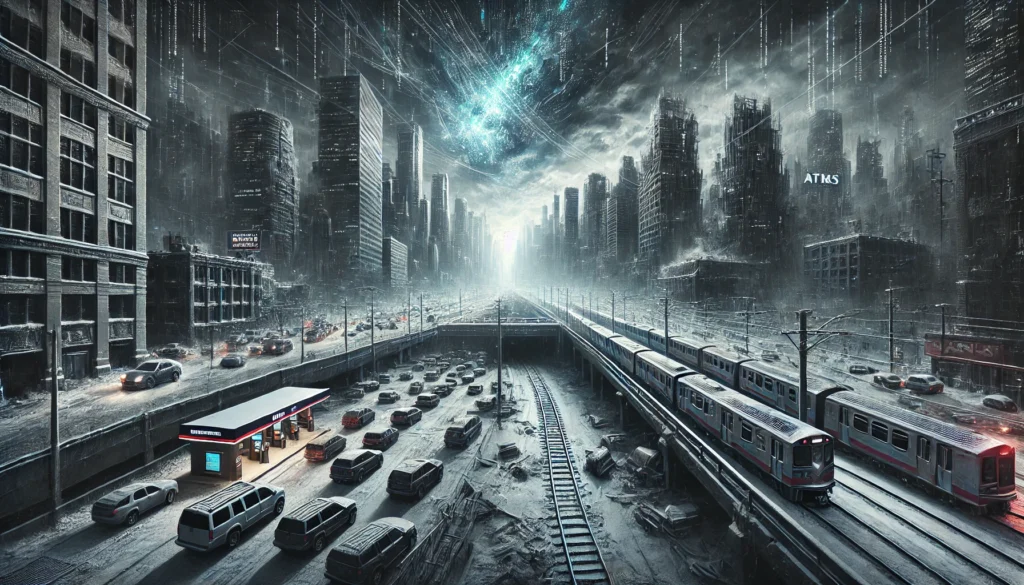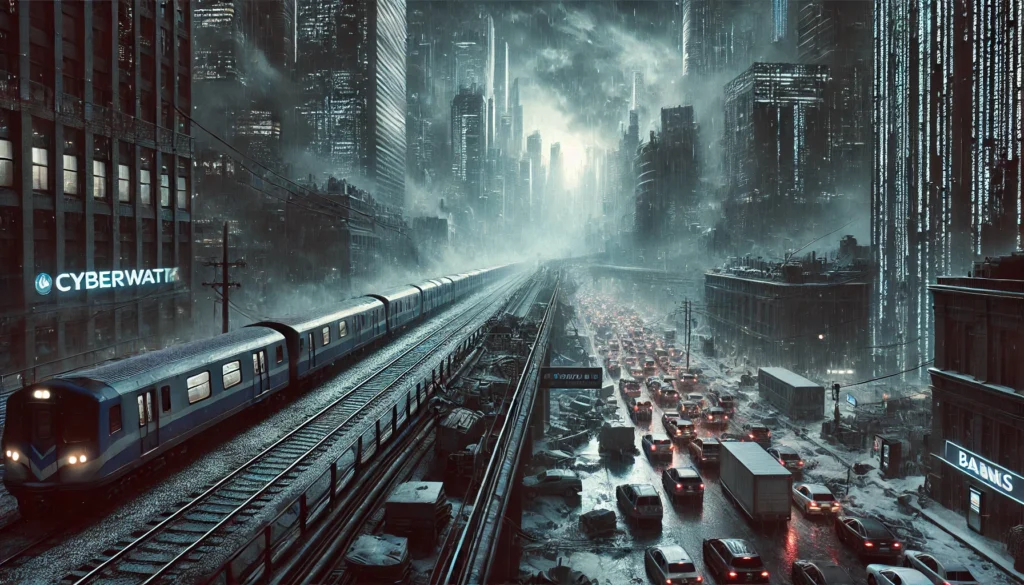
Illustration by DALL·E
Blueprint for Paul Jorion’s Speech at Panel 3: The Silent War and Strategic Mobilization in the Age of Infrastructure Warfare
War must be avoided at all costs. However, our desire for peace is no guarantee against aggression from an adversary with less noble intentions.
Opening Statement: Redefining the Nature of War
“When we speak of war today, we must acknowledge that it is evolving. The battlefield is no longer solely defined by tanks, missiles, and soldiers, but increasingly by silent yet devastating disruptions. The war of the future may not always be fought with explosives—it may be a war of paralysis, a war where the goal is not to destroy but to freeze. In such a scenario, the key to defense is not just military readiness, but societal resilience: the ability to maintain essential functions when an adversary seeks to immobilize us.”
Context: A War of Immobilization Rather Than Destruction
- The conflicts in Ukraine, the Middle East, and the Indo-Pacific still follow conventional patterns of kinetic warfare, but we are seeing the rise of a new strategy: targeting an adversary’s ability to function rather than its ability to fight.
- Infrastructure—energy grids, supply chains, financial systems, digital networks—is now a primary target.
- A war of paralysis means that mobilization will no longer be about assembling troops but ensuring that our societies can continue to operate under systemic attack.
Applying the 4B Framework to a Silent War
- Build – Fortify Our Digital and Physical Resilience
- We must build systemic redundancies into critical infrastructure—energy, transportation, finance, communications—so that societies do not collapse if primary systems are compromised.
- This means decentralizing essential services, increasing cybersecurity for financial and industrial sectors, and ensuring physical infrastructure can operate under duress.
- Buy – Invest in Technological and Human Capital Readiness
-
- Governments must invest in cyber defense and AI-driven countermeasures as aggressively as they invest in conventional defense.
- A silent war is fought through control of information, systems, and automation. Who controls the AI controlling the grid, the stock market, the internet, wins.
- Reskilling populations to work in high-tech and strategic industries must be prioritized to ensure operational autonomy.
- Borrow – Leverage Existing Civil and Corporate Infrastructure
-
- Mobilization in a silent war requires strategic partnerships with private actors who control key infrastructure:
- Energy companies, cloud providers, telecom giants, financial clearinghouses.
- In case of emergency, states must be prepared to requisition private assets just as they would in a kinetic war.
- Europe, for example, needs to coordinate cross-border digital and energy defense strategies to ensure that a targeted attack on one country does not paralyze the continent.
- Mobilization in a silent war requires strategic partnerships with private actors who control key infrastructure:
- Bridge – Strengthening the Civil-Military Partnership
-
- The distinction between military and civilian resilience is fading. Citizens are combatants in a war of infrastructure, whether they want to be or not.
- Societies must develop new forms of distributed resilience, where local communities can maintain basic services even when central control is lost.
- This requires rethinking national service: beyond military conscription, do we need cyber reserves, logistics networks, AI-managed continuity plans?
Key Challenges: What Can Be Mobilized, What Can Be Risked?
- Who should be mobilized? Traditional mobilization logic—exempting strategic workers and calling up reserve forces—must expand to include cyber defenders, IT specialists, and industrial workers.
- What can we risk losing? If we shift from a kinetic war mindset to an immobilization war mindset, our thresholds for acceptable risk change. Can we afford temporary blackouts? Economic freezes? Food shortages?
- How quickly can we shift from peace to full mobilization? Nations must plan for worst-case scenarios where large-scale disruptions occur within minutes, not weeks. Governments must prepare rapid-response protocols that do not rely on normal bureaucratic timescales.
Conclusion: A Future War That Maybe Few Will See, But All Will Feel
“The next war may not be one that we see in the headlines, but one that we feel in our daily lives. The lights go out. The trains stop running. Supermarkets remain empty. Bank accounts are frozen. Mobilization in such a war is no longer about arming soldiers but ensuring that societies cannot be paralyzed.
Europe’s defense readiness is not just about weapons, but about resilience—economic, digital, and societal. Our ability to withstand a war of immobilization will determine whether we remain operational or collapse at the first targeted strike. This must be our priority in the face of emerging threats.”
Illustration by DALL·E

One response to “Paris Defence and Strategy Forum – The Silent War and Strategic Mobilization in the Age of Infrastructure Warfare, March 12th 2025”
This article goes along with what I was writing. It turns out it was published one day earlier than my own. So the idea is clearly in the air. British military drops basic training to fast track recruitment of ‘cyber warriors’, February 10th 2025